|
Exercito Brasileiro Army of Brazil D.F Vasconcellos Industria Brasileira Pioneiro 6x30 Military Binoculars made in Brazil |
|
As WWII mobilization contracts preempted the exportation and supply of military optics from traditional suppliers like Germany, the UK, and the USA (for the second time in 40 years), other countries viewed developing a domestic military optics industry as being in the nation’s strategic interest (Just as Japan had done immediately after WWI). D.F. Vasconcellos Industria Brasiliera was founded in Sao Paulo Brazil in April 1941, and it’s first decade was devoted exclusively to producing military optics, such as my 6x30 Brazilian Army marked binoculars in it’s DFV and Exercito Braziliero marked case. After 1951 D.F. Vasconcellos added civilian optics, and then in 1962 they branched into surgical microscopes, and now they specialize in microsurgery optical instrumentation. The “ A ” and flaming bomb probably indicates ordnance (artillery) division usage. |
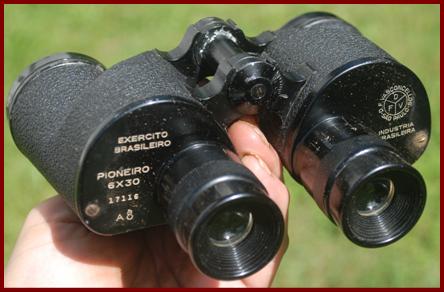
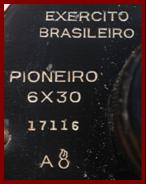
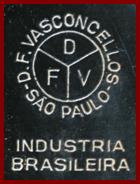
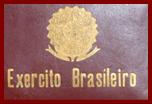
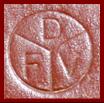
|
Czech Optikotechna P ŕ evov 8x30 Military Binoculars with Reticule |
|
My 8x30 military binoculars carry the OP logo of Optikotechna P ŕ evov. Since this firm was nationalized in 1946, and according to a 2010 Meopta presentation was renamed Meopta in 1946, I believe these binoculars must predate 1943. I believe 670 was their model number for 8x30 binoculars with reticule/ ranging grid. Optikotechna P ŕ evov was founded in 1933, and then became a subsidiary of Zbrojovka Brno in 1935, and was a major supplier to the Czech army and a supplier to other armies (including Sweden) After 1939 the company produced only military optics, including binoculars, ZF4 rifle scopes, periscopes, & range finders. It was then under German control during the occupation of Czechoslovakia, so WWII Optikotechna binoculars produced after 1943 under the German occupation would have carried only the d.o.w. German wartime manufacturer code. |
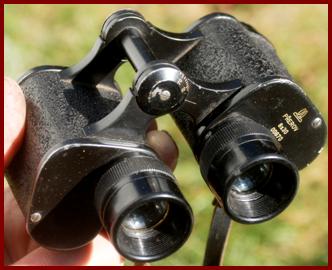
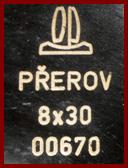
|
My 1977 7x40 Romanian military binoculars were made by I.O.R. (Întreprinderea Optică Română), in Vadala Romania. This was a Romanian optical firm established in 1935. These binoculars used lenses manufactured by the German firm Schott Glaswerk GmbH, which were T3 magnesium fluoride coated. The left hand side of these binoculars has a fold out IR filter and an IR detector that seems to be similar to the IR detector that is used on East German Carl Zeiss NVA binoculars. The objective lens covers contain accessory yellow filters. ( Thanks to Sturm Handels GmbH for picking me out a nice example to purchase to present here). |
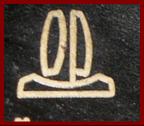
|
“OP” logo |

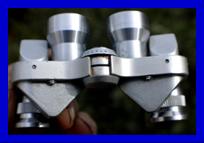
|
Japanese External Reverse Porro Prism Binoculars. WEBSITE MUSEUM |
|
OTHER BINOCULARS #9 & OPTICAL SIGHTS |
|
Ex é rcito Brasileiro Army of Brazil Czech Optikotechna P ŕ evov 8x30 Military Binoculars made in Czechoslovakia. |

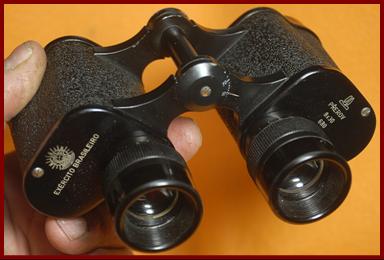


|
My 8x30 Brazilian Army / Ex ér cito Brasileiro military binoculars carry the OP logo of the Czech optical firm Optikotechna P ŕ evov. Since this firm was nationalized in 1946, and also according to a 2010 Meopta presentation it was renamed Meopta in 1946, I believe these binoculars must predate 1943. I believe that 680 is their model number for 8x30 binoculars without reticule/ ranging grid. More information on Optikotechna P ŕ evov binoculars appears with the binoculars below. |
|
1977 Romanian I.O.R. (Întreprinderea Optică Română) Vadala 7x40 Military Binoculars w/ IR Filter |
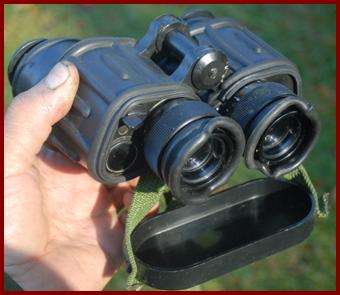
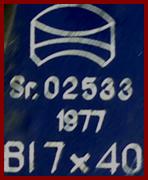
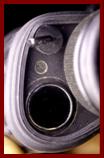
|
IR detector |
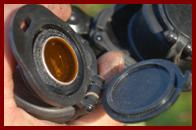
|
1927 Polish H. Kolberg iSka 6x30 WP (Wojsko Polskie/Polish Army) Military Binoculars w/ graticule |
|
Fabryka Aparatur Optycznych I Precyzyinch H. Kolberg iSka S.A. (Factory of Optical & Precise Instruments H. Kolberg Ltd) was established in Poland in 1921, and my 6x30 binoculars were part of a 1925 4,000 polish military 6x30 binoculars contract which funded manufacturing equipment purchases to establish the factory. My 6x30 binoculars carry the WP Wojsko Polskie/ Polish Army mark, plus Polish eagle, and by serial number #10667 they were produced in 1927. Info credit “The History of 6x30 binoculars H. Kolberg iSka and PZO” by Anna Vacani |


|
Strange and Unusual ! Carl Zeiss Jena Binoct ?? Perhaps Marketing sample 7x50 binoculars |
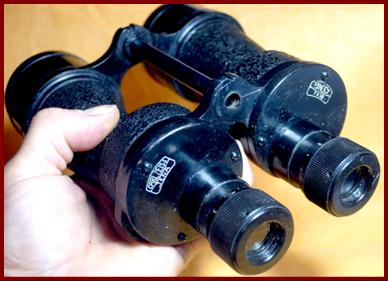
|
When I encounter a product that appears factory produced but whose configuration & markings are inconsistent with known production, I think marketing prototype. The reason that I think this is that as a former product engineer, product line director, marketing director, marketing VP, and sales rep at 4 companies I probably had 100 examples of non standard product (prototypes and mockups ) made for me with non standard designs, colors, features, markings, logos, and also had existing products re-branded: and their purpose was to measure distributor/market demand at trade shows; as samples for potential contracts; for field trials; as sales samples, etc.: of items which did and did not proceed to production. And I probably watched colleagues have 1,000 prototypes made. Real example: I had a meeting with the head of the NY state prison system with a prototype, and then ran a successful field trial of 2 functional prototype body orifice contraband metal detecting chairs as proposed prison equipment at two New York state prisons. And then New York, Ct., and other state and federal prison systems purchased them for their maximum and medium security prisons. I still have those two prototypes. If someone looked at them they might say “the co. never made them that way”, because those two trial prototypes differed in ways to the production models. They were factory made, factory marked, functional, but not standard production: only field trial prototypes. For every product ever manufactured, various prototypes were made, plus prototypes and mockups were also made for millions of products being considered for marketing/production or applying for patents. Most are destroyed as useless, but some just get taken home, like I sometimes did. When I had prototypes made, they did not normally get a serial number because they were not part of a production, except when mandated by law (firearms), which like military contract guns would get a different serial number from regular production. I have a collection of prototypes including stuff I wasn’t involved in, including one of the world’s larger collection of factory made salesman sample cut away padlocks and locks. My point is that for me Zeiss markings and a seemingly unknown Zeiss product name (“Binoct”) on Ross or NIL No 4 or No 5 pattern binoculars (a Steplux variation), with no serial number (both Zeiss and Ross/NIL always had serial numbers) and with no sign of ever having had any other markings, to me suggests being a prototype made at some factory. I know that when WWII ended Ross was desperate to find sales markets, but the only country whose consumers had lots of disposable income and big demand for binoculars was the USA. But there was no consumer market demand in the USA for Ross brand binoculars. But the US government had widely advertised during the war that they needed Zeiss binoculars to be donated to the US military, and they were one of the most desired soldier bring back items, so everybody knew Zeiss binoculars were desirable. The idea of Carl Zeiss Inc (independent US importer) or another importer/distributor exploring the feasibility of Zeiss branded Ross/NIL binoculars for the wealthy and binoculars hungry post war US market seems a logical probability to me, but it is just educated conjecture. |

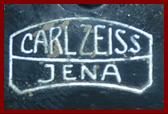
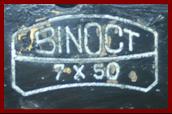
|
Zeiss marked binoculars are on the left side. Naval pattern (added red naval desiccation ports) Ross No 5 Mk 4 binoculars are on the right. |
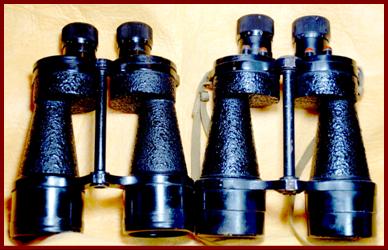
|
In support of my speculation (these being a Zeiss branded Ross factory made importer sample and not an end user fake) and contrary to what one might suppose, in the immediate post war period neither of the two surviving Zeiss named entities (in East & West Germany and with both making Zeiss logo marked binoculars) apparently had any trademark rights to Zeiss name/ Zeiss logo use on binoculars. The West German Zeiss entity apparently obtained a West German trademark 641728 registered June 20 1953 for West Germany. The West German Zeiss entity applied for a US trademark (for “Carl Zeiss” plus rectangle or segmented rectangle with one or more curved sides) Dec 10,1953 in the USA (but did not make any claim of any priority date activity in US commerce for prior to 12/10/53), and it appears their trademark registration was not granted until Oct. 5 1971/ #0921537. The West German Zeiss entity obtained a “Carl Zeiss Jena” logo design as a UK trademark registered May 20,1971/#975176). So I believe non Zeiss affiliated entities had a legal right to have manufactured/imported/marketed a Zeiss logo but non Zeiss associated binocular, as my Carl Zeiss Ross binoculars may be a sample of, in the US prior to 1953, and probably in the US and the UK up to 1971. There is evidence that various importers had non Zeiss manufactured binoculars made that looked as much like Zeiss models as possible, and with Zeiss logos and with standard Zeiss model names on them, and these were certainly intended to deceive customers. And apparently Zeiss at one point had binoculars contract made in Japan, widely proclaimed as being fake Zeiss binoculars, until evidence apparently surfaced that they were actually contracted for by Zeiss. |
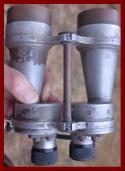
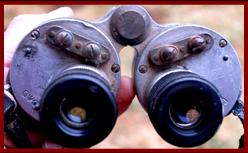
|
NIL Nottingham Ind Ltd naval binoculars |
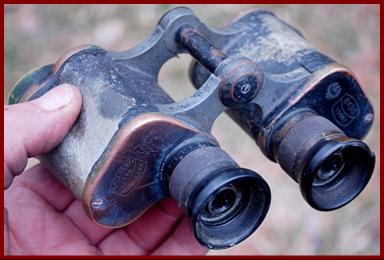
|
Barr and Stroud Royal Navy binoculars attributed to battleship HMS Queen Elizabeth in WWII |
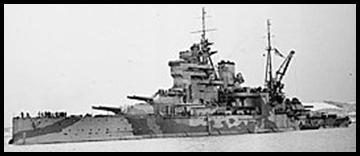
|
The battleship HMS Queen Elizabeth was launched in 1913, upgraded for WWII, was damaged in Alexandria Egypt on Dec. 1941 by Italian frogmen Antonio Maceglia and Spartaco Schergat of the manned torpedo Siluro Lenta Corsa 222 of the X Flottiglia MAS. It returned to service in June 1943. It’s service in Egypt was protection of the Sue canal shipping activity. |
|
People have an inherent affinity for badges of shared association (“assertion I was there”): think world fair pins, or wanderstock stocknagel walking stick place badges, or military campaign ribbons, or soldier painted names of battles on their helmets. When I see ship + place + date on binoculars I perceive it as participant commemoration and/or sometimes a presentation item given by comrades at end of naval service. |
|
Jules Huet & Cie 16x40 British Military marked binoculars documented first sold in Argentina |
|
My Jules Huet & Cie. 16x40 binoculars are marked as originally having been sold at retail by the optical shop G. Catton Optico , 531 C .(Calle) Pellegrini, Buenos Aires (Argentina). (This firm is documented as a seller of optical goods in the 1914 United States Bureau of Foreign & Domestic Commerce Directory). These binoculars are also British War Office broad arrow property marked, This is not actually an ownership contradiction, as in WWI and WWII in order to meet military binoculars shortages, the UK widely solicited donation of decent civilian binoculars, which if accepted into military service, would received government property markings like these. |
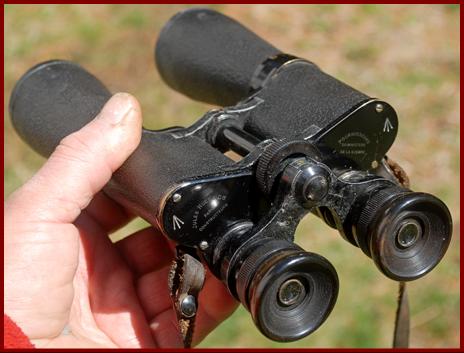
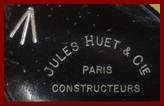
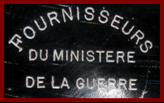
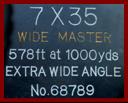

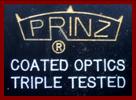
|
“Suppliers to the ministry of war” logo. |
|
1917 Carl Zeiss Deisnstglas DF8x24 WWI German army binoculars |
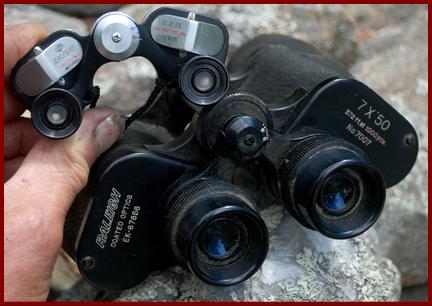
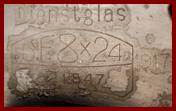

|
My Carl Zeiss Deinstglas DF 8x24 binoculars are WWI German military binoculars “ D.F ” is “Doppel Fernrohrglas”, or Double Telescope. As the war progressed and model 08 non prismatic binoculars were issued to non commissioned officers, binoculars such as these were issued to infantry officers. Per Hans Seeger, F.L.S. 65 is an acceptance mark of Fuerwerkslaboratorium Spandau, who took over responsibility for military acceptance of D.F. pattern optical devices in 1908. |
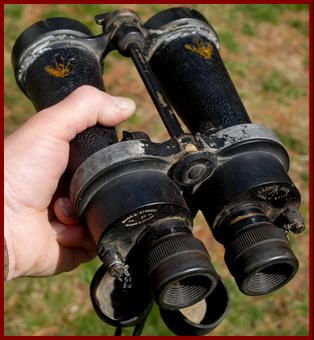


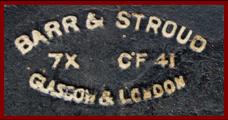

|
These binoculars have typical Royal Naval features such as rotating filter system, dessicant ports, and the painted over typical of British naval released from service. |


|
1944 WWII Indian army No. 2Mk11 binoculars made by Indian Ordnance Factory in Calcutta India |
|
North Korean 8x30 army KPA/ Korean Peoples Army 8x30 binoculars made in North Korea DPRK/ Democratic Peoples Republic of China |
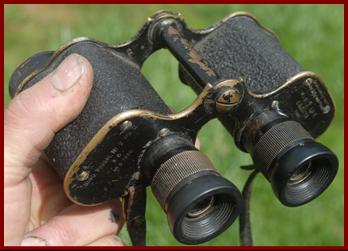
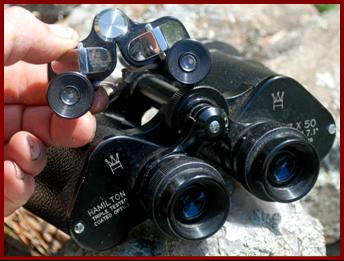
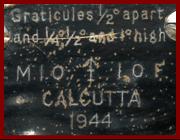
|
It is my understanding that the Mathematical Instrument Office ( M.I.O. ) established the Indian Ordnance Factory ( I.O.F ) in Calcutta India in 1941 to produce Artillery directors, binoculars, and prismatic compasses. And from April1941-August 1945 the I.O.F. 1`produced 17,724 No 2 6x30 binoculars, including this 1944 example. The broad arrow over “ I ” is the Indian government property mark. (Information credits Frank Flagorio, William Reid). The S S is not proven, but is plausibly an Indian Signals Squadron marking (speculative). |

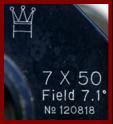
|
WWII USMC /U.S. Marine Corps M9 6x30 binoculars made by Universal Camera Corp. |
|
The Google Translate Ap on my phone interprets this as “Chosun Pyongyang” under the factory logo. Additional info sought? Miniature.binoculars@ gmail.com. |
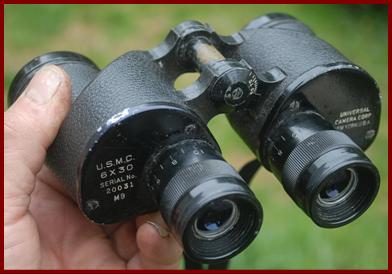

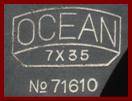
|
It is my understanding that the Universal Camera Corporation made 30,244 M9 binoculars under contract to the US Army and the US Marine Corps in 1942 and early 1943, after which production shifted to Bausch & Lomb. My example is late production, probably 1943, as it is not dated (most 1942 models were) and it does not have the W.P.B. (War Production Board) marking that most 1942 M9 binoculars had, and also judging by observed serial numbers of 1942 marked M9 binoculars. These have a left ocular ranging grid (the M9 pattern binoculars that Universal Camera Corp made under UK contracts had a different right ocular ranging grid). |
|
It impressed me that my North Korean KPA/ Korean Peoples Army 8x30 binoculars were obviously designed for easy field servicing: they were probably the easiest to disassemble and work on of any full size binoculars I have encountered. (I had to clean and recollimate mine). I believe my binoculars post date the Korean war/ post 1953. I have found little public information on North Korean optical industries, and would welcome further insights viewers might provide to miniature.binoculars@gmail.com. |
|
C.P Goerz Wein M9 k.k. Landwehrar (kasiserich-konigliche-Landwehr) WWI Cisleithanian Austrian Territorial Army Binoculars with right ocular graticule/ ranging grid |
|
U.S. Army WWII marked Wollensak (M5) 6x30 binoculars issued as Australian Army property marked No2 Mk 11 binoculars and marked R.L.B. |
|
My WWII US Army marked Wollensak 6x30 R.L.B. binoculars also marked as UK/ Commonwealth (type) No2 Mk II and with Australian military Broad Arrow/ D property markings presumably represent a US Army contract diverted to Australia. In May 1941 the US military contracted for 16,000 Wollensak 6x30 binoculars with U.S. property markings. But the March 1941 Lend Lease agreement had authorized transfer of US military equipment to the UK and Commonwealth. So in July 1941 58,000 Wollensak binoculars were then requisitioned for the UK/Commonwealth under Lend Lease. My Wollensak 6x30 U.S. marked and R.L.B. marked serial no. 2018 binoculars were part of those transferred by the U.S. to Australia, and were type re-designated as No 2MKII and Australian D D property marked, and painted green for the Jan. 1943 Papua New Guinea campaign. (A quantity of U.S. Army marked and Australian and New Zealand marked Wollensak binoculars in black and green are known and documented, with R.L.B and F.J.A. inspection authorization). The earlier R.L.B. inspection mark is inspection under authority of U.S. Col. Ray L. Bowlen. Reference acknowledgement: Robin Leaech: Wollensak History-Binoculars & Optics |


|
1934 Australian army Ordnance Services standing orders on property marks on Australian military equipment, of Defense department equipment property (D arrow D) and also of property obtained under the High Commissioner’s Office (arrow within D). |
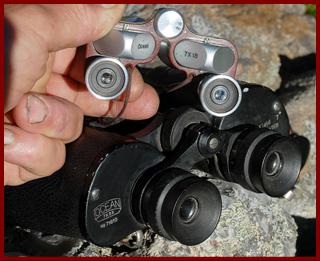


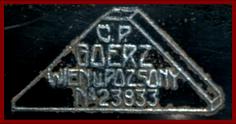
|
My C.P. Goerz M9 Feldstecher 6 fach Mit Skala (field glasses 6 power with scale) are property marked Eigentum des k.k. Landwehrarars (property of the kaiserich konigliche Landwehrararars), which was the Cisleithanian/ (Austrian part of the Austrian Hungarian Empire) territorial army 1869-1918, members of which are shown in World War I in 1914 at left. |
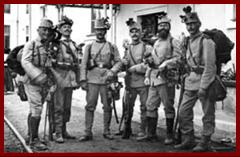
|
Establts AFSA Serie 6 French Military binoculars MG Minist č re de la Guerre marked also UK military property broad Arrow Marked. |

|
W.S.L.D.V. West Sussex Local Defence Volunteers marked Magnus 12x30 binoculars marked to commander Leslie Evershed-Martin of #5 company C platoon 1st battalion/Chichester Home Guard |

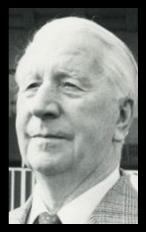
|
The Chichester Home Guard was formed in the summer of 1940 as part of the West Sussex (UK)Local Defense Volunteers to counter a threatened German invasion, and emplaced 2 howitzers aimed at Thorney Island. My Magnus 12x30 private purchase binoculars and case are marked W.S.L.D.V. for W est S ussex D efense V olunteers and are engraved EVERSHED-MARTIN CHICHESTER for Leslie Evershed Martin (OBE, CBE), commander of 5 company C platoon 1st Batalion W.S.L.D.V. /Chichester Home Guard. Leslie Evershed Martin went on to become mayor of Chichester and founded the Chichester Festival Theater. Credit: A to Z Chichester by Phillip MacDougall |
|
Leslie Evershed Martin |


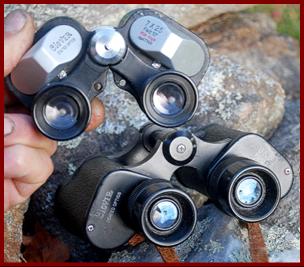
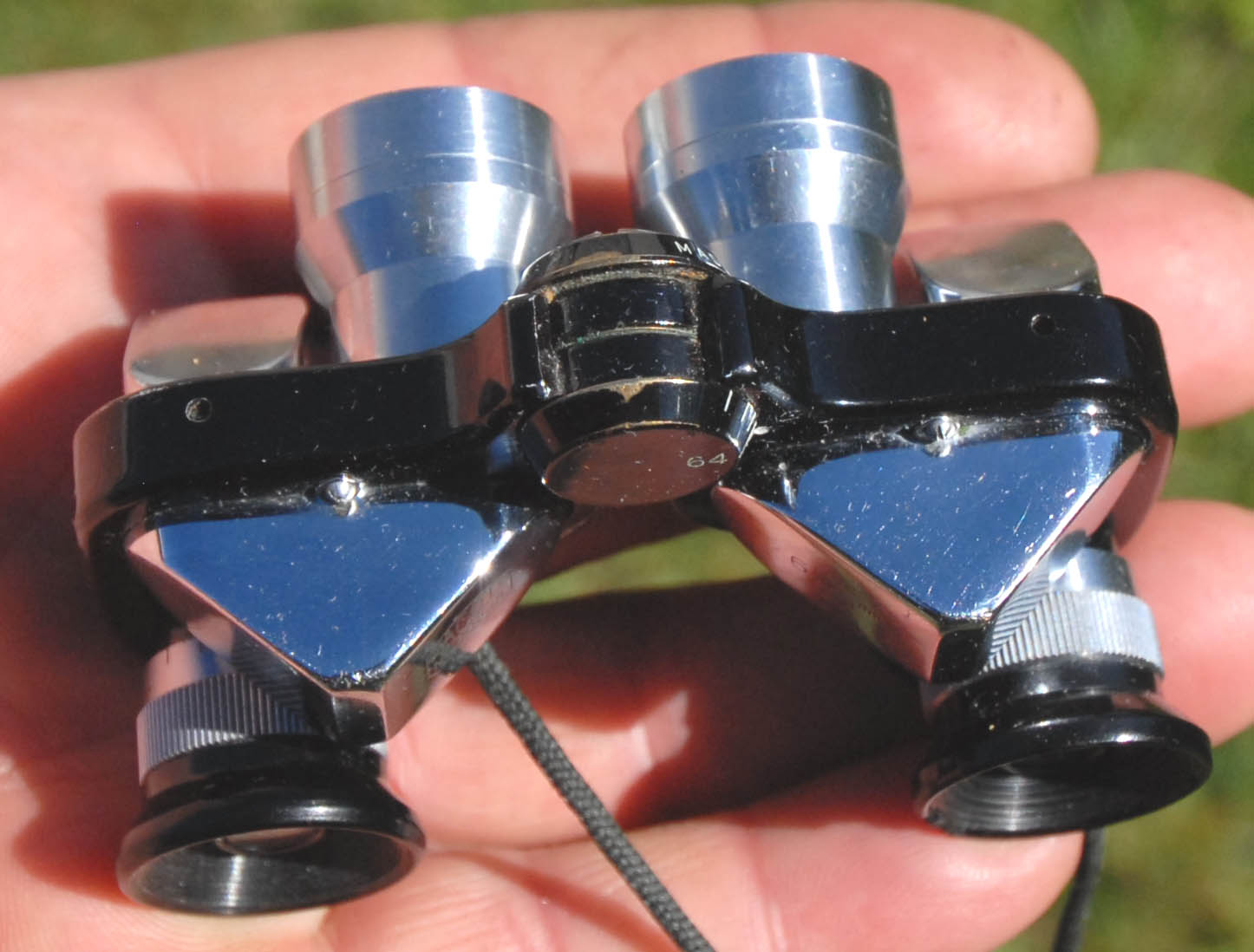
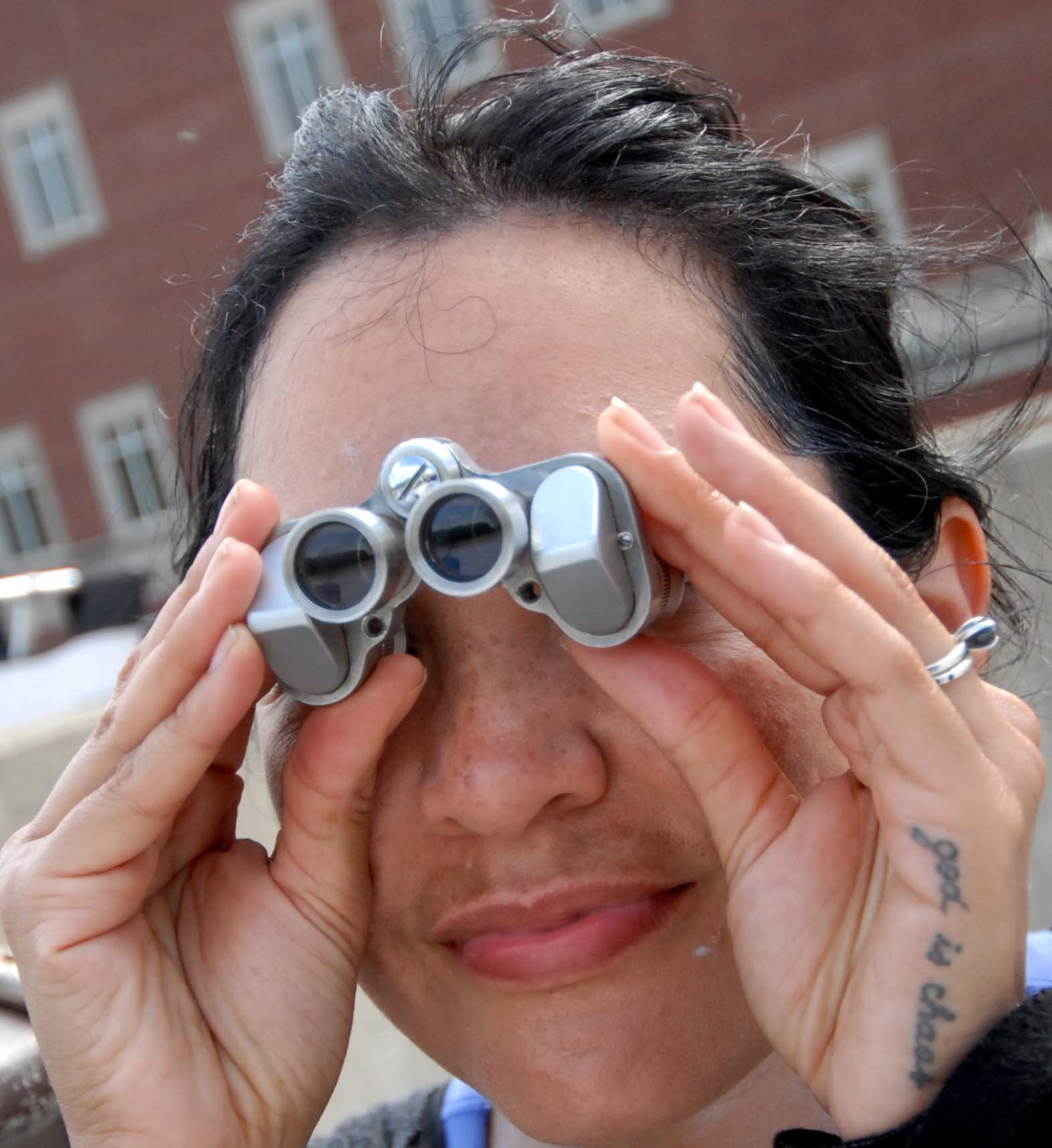

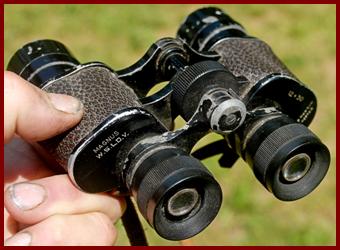




|
Afsa was a brand of French binoculars supplied to the French military in WWI, and documentation exists were also sold to the US and UK military in WWI (the US military/Franford Arsenal disposed of 2,754 pairs of Afsa binoculars as military surplus in 1921). My Establishment Afsa serie 6 binoculars carry the MG French Minist č re de la Guerre property mark, and also carry the British Broad Arrow property mark. The UK military property marked and issued whatever used non standard binoculars it could acquire including by private donation in WWII, and to some degree in WWI, on an emergency basis. |